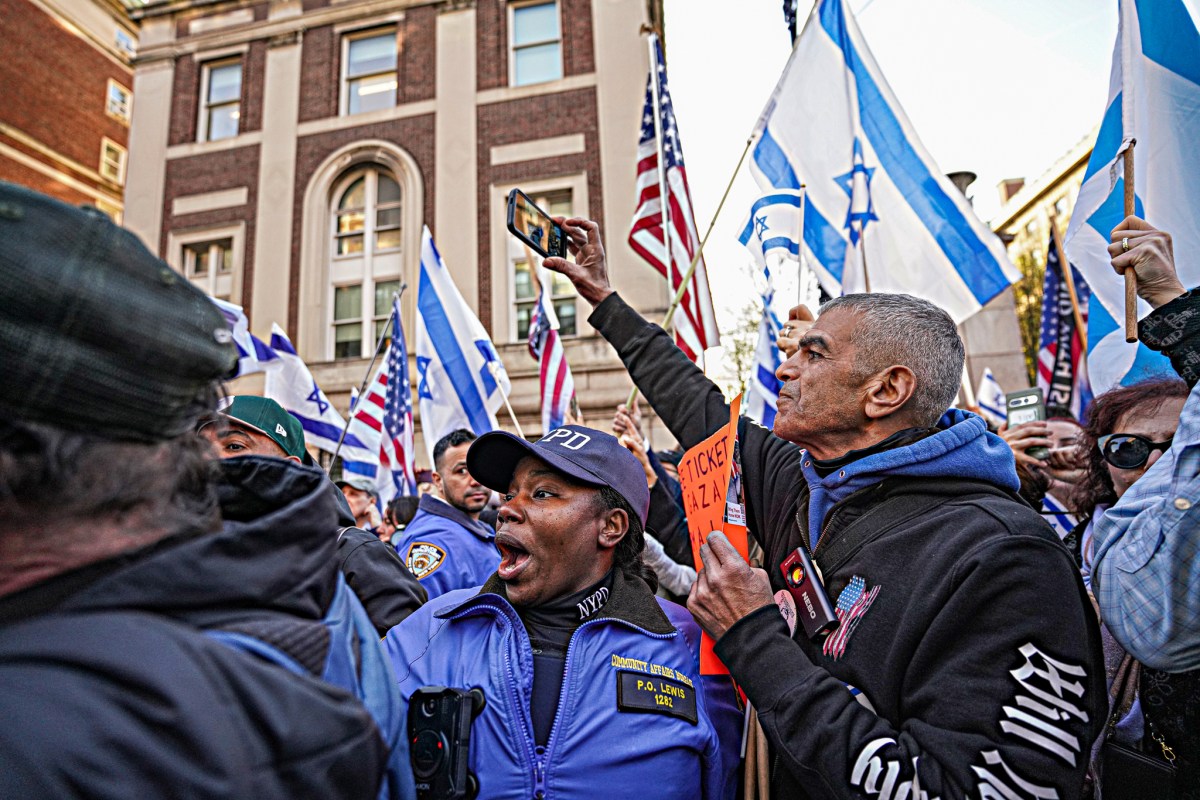Melissa Leo is about to get on a bus. I repeat: When she travels, Oscar-winning actress Melissa Leo takes the bus. If she’s leaving her home in southern New York state to visit New York City — as she’s done for 30 years, and is now doing to attend a screening of her new film, “Burn Country” — she doesn’t go with a souped-up car service. As we speak over the phone, she even pauses to order a round-trip bus ticket, like someone who’s never been feted at the Academy Awards. But it’s not just about her keeping a normal life. “I’ve found the best way to transport from my home is by bus,” Leo tells us. “It’s more ecologically responsible. And in many ways, it’s safer.”
For “Burn Country” — a kind of neo-noir that doesn’t quite play like a noir, about an Afghan translator (Dominic Rains) who takes asylum in a small American town, only to uncover a shady mystery — Leo traveled quite far. The film is set and was shot in northern California. It’s one of many far-flung places the New York City native has found herself in over her long career. “The life of an actor is like touring humanity,” she says. “I’ve had a nice, life-long tour of human beings. I get to see the things that bind us together. It’s one of the best parts of my job! It’s about experiencing experiences that might not be your own experience.” RELATED: Interview: Imogen Poots on “Frank & Lola” and how love and sanity don’t mix One familiar-but-different aspect of doing “Burn Country” is the role she plays. She’s Gloria, the town’s longtime sheriff, who’s put Rains’ outsider up. Gloria’s laidback demeanor is a different kind than she exhibited on “Homicide: Life on the Streets,” on which she spent five seasons as tough-as-nails detective Kay Howard. “When I was approaching this role, I knew Kay Howard was coming with me, making it easier,” she says. But she doesn’t think Gloria and Kay are completely alien to each other. “What Kay deals with may be more gruesome, but it’s no different.” Both, she says, are good at their jobs because they know how everything works. For Gloria, it’s having the job, staying in the town for so long, that she’s familiar with every single resident. “It’s not just detective work that helps her figure things out. It’s that she knows these people.” For Kay, her skill involved simply having earned more clearance than her male counterparts. “I think maybe that’s because she came at it with a woman’s mind. Maybe.” This isn’t Leo’s first time working with “Burn Country”’s writer and director, Ian Olds. She’s known him since he was a film student at Columbia, and she’s starred in his 2005 short film “Bomb.” She’s wanted to work with him ever since, waiting around as he made two documentaries — including 2009’s “The Fixer: The Taking of Ajmal Naqshbandi,” which loosely inspired “Burn Country” — before he returned to narrative films (and thus working with actors). “I have watched his work with great impatience at times,” she says, laughing. “I’ve waited for him to bring his extraordinary talents to today’s great dearth of great directors in independent film. I’ve waited 10 years or more to have this experience with him.” Leo says that Olds possesses what she loves most about filmmakers, which is an ability to not only communicate with actors but entire crews, vastly different kinds of people. Not that there’s one single trait that defines a great director for her. “Tommy Lee Jones — oh my god, what a great director to work for! Was he kind? Not particularly. He’s a beautiful, kind man, but not when he’s directing,” Leo recalls, laughing, about her “Three Burials of Melquiades Estrada” director. “He’s a gruff kind of guy. He’s a cowboy. He can smell fear, just like a good hunter.” But she’s particularly effusive about Olds. “He’s an artist, a true film artist. And this is not the way I talk about every director I’ve ever worked with — fewer and fewer of them, in fact,” she says. She doesn’t hold back when talking about “Burn Country,” a film that’s impossible to categorize as a genre, that starts off looking like one kind of film and keeps twisting and turning, shocking and surprising. “It engages you, and you can’t even say why it engages you. It will be copied. Someone will make millions, billions off of this new genre of Ian Olds films,” she gushes.
What’s their next team-up, then?
“I don’t know,” she replies. “But the next time he calls, I’m going.”
Melissa Leo gushes about ‘Burn Country’ director Ian Olds
Follow Matt Prigge on Twitter @mattprigge


















